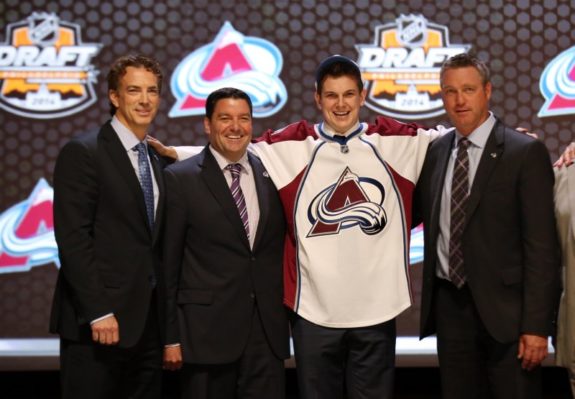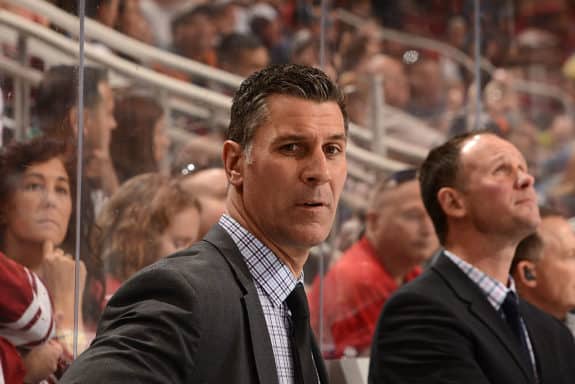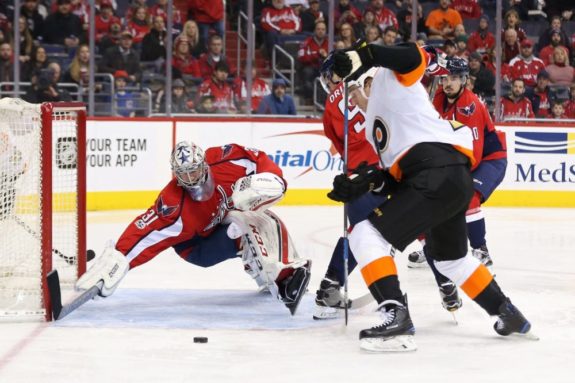The Colorado Avalanche have embraced their namesake to clear away their old business model and shift their approach to the salary cap in order to build a new foundation for future success. While the free agent signings of Matt Calvert and Ian Cole raised a few questions, the Avalanche continued their more recent trend towards shorter-term deals avoiding aging veterans.
While those who have followed the Avalanche may still be wrestling with post-traumatic stress from previous free agent acquisitions, history is not always an accurate predictor of future failure.
Bad Contracts Left Scars
The early stages of the Joe Sakic/Patrick Roy joint leadership era gave adequate reason for concern about signing aging players to stinky contracts.

The trauma started with a bang during 2014 free agency when Colorado traded for 34-year-old defenseman Brad Stuart. Then, before playing a single game, the team extended him an additional two years at $3.6 million per year, on top of the year remaining on his original contract.
Next, the Avalanche signed 37-year-old Jarome Iginla for three years and $16 million. The team also lost fan favorite 28-year-old Paul Stastny in the same free agency.
Adding salt to the wound, during free agency the following year, the Avalanche signed veteran defenseman Francois Beauchemin, 35, to a three-year, $13.5 million contract.

None of those signings ended well. Stuart essentially played one season and was eventually bought out. Iginla wore down and was traded with salary retained. Beauchemin was bought out of his final year. Not only did the Avalanche overpay for players who were not able to consistently contribute, the aging veterans clogged the pipeline for younger players, making it harder for them to get necessary ice time to develop at the NHL level.
Colorado began to look like a club that would rather bring in experienced players near the end of their career, loading the team up with onerous contracts, instead of making room for their younger players to develop. One started to wonder if Greg Sherman, then-general manager of the team, should have held onto the checkbook a little tighter.
Avs Backed Themselves Into Trouble
2015-16 saw Colorado hit the 50-contract limit and struggle to shuffle players. The situation left the team without the leeway of making a waiver wire pickup or making a trade without unloading a player first. It wasn’t pretty. It also helped set the stage for a logjam the following year in terms of salary cap issues.
By the 2016-17 season, the Avalanche had backed themselves into a fairly tight corner with salaries. Player contracts left the team with a meager $909,731 in cap space and a total payroll of $72,090,269.
The bill for questionable moves came due with a vengeance and it left the fan base with concerns about history repeating itself. The scars ran deep. Could the Avalanche front office learn from past mistakes and shift their approach? While other teams were closer to the cap ceiling, the Avalanche were not getting the quality of on-ice play that merited such a big payroll. Not only was the team near the cap limit, but Colorado finished the year with a regular season franchise low of 48 points. There were mitigating factors – Roy unexpectedly resigned six weeks before the start of training camp, the new coach came on with little time to get to speed and without the chance to hire his own staff, and not all the players suited the new team strategy.
Maybe. Inklings of change filtered through. While the Avalanche still acquired a number of free agents in July for 2016, they were all signed to one and two-year deals. After Roy left, the hiring of Coach Jared Bednar signaled a more significant shift in direction for the team – younger and faster.

As the season limped along, Colorado made another set of substantial moves which flew in the face of prior history.
The Avalanche traded a couple valued vets who no longer fit the team goal of younger and faster – Cody McLeod and Jarome Iginla. The McLeod trade left the Avalanche responsible for $533,333 of his salary while the Iginla move left them on the hook for $2,666,666.
Colorado, at that time, was a team that had to pay to move players off their roster. It was not a good look. But it also demonstrated the team was moving on from a history of holding onto favored skaters beyond their useful tenure. Colorado’s mindset was moving into playing the best available player at the position, regardless of seniority or salary. The shift paid off in the 2017-18 season as the Avalanche made the playoffs for the first time in four years, with the youngest roster in the NHL.
Signing Cole and Calvert Is Not a Blast From the Past
Fast forward to the signings of Cole and Calvert and fears resurfaced. Did the acquisitions indicate the Avalanche were returning to their questionable history of hiring veterans past their prime for terms that would hurt the team?
No.
The Avalanche started laying the groundwork for a different future back in 2016. Not only did they hire a new coach and trade away some vets, Colorado only issued multiple year contracts to players under 30. It was a subtle shift, missed by many, but the team has maintained the practice for the past two years, and the team has now finally emerged from the burdens of those bad moves.
Signing Cole and Calvert actually shows that the team continues to build on the newer approach. Both players are under 30 and are only signed for three years. Both players also bring a steady, experienced background.

While not flashy signings, the team isn’t beholden to the players into their retirement years nor are they making John Tavares-level money. They do, however, bring a skilled record to a developing team while young enough to bring value. The contracts are also reasonable enough to believe Colorado won’t have a problem moving on should they skaters get outplayed by younger players.
Cole was acquired in a free agent season with slim blueline pickings and should help anchor a defensive corps that suffered significant injuries last year. Meanwhile, Calvert looks to be a younger replacement for the departed Blake Comeau. Both players should still have plenty of solid hockey ahead of them.
Even if the new acquisitions somehow manage to fade, Colorado no longer seems inclined to hold onto players who can’t contribute. They had no issue burying Joe Colborne in the minors, buying out a Hall of Famer, and releasing the likes of Nail Yakupov and Duncan Siemens. The Avalanche have changed their previous mode of operation in order to ice the best players, regardless of contract or history. The NHL is too competitive to allow for the sentiment afforded in the non-salary cap era and Colorado seems to have – finally – embraced that reality.
As far as the salary cap is concerned, the Avalanche are currently sitting pretty with over $14 million in the coffers before hitting the ceiling. Only restricted free agent Patrik Nemeth (who filed for salary arbitration) remains to be signed and his salary shouldn’t create much of a dent. Even better, the new signings will not create an onerous cap burden even if the players don’t work and the team maintains sufficient financial flexibility to deal with the upcoming contracts their younger stars will soon demand.

Last year alone illustrates how much player management has changed in the past couple of years. Colorado was the youngest team in the NHL for large portions of last season and were the youngest team in the postseason. The oldest player on the team started the season at age 31 and not a single player had a contract that will take them past the age of 35. Perhaps it’s time to embrace the changes.
The Avalanche transformed their approach to player contracts and are now reaping some of the rewards. Colorado’s improved cap stewardship made it possible for the team to acquire promising goaltender Philipp Grubauer for essentially a second-round pick and the cash to buy out Brooks Orpik’s final year.

Good management opens up doors of opportunity and the Avalanche no longer conduct business like they did in 2015. A shift happened and now it’s time for the healing to begin.
While the memories of past horrible player and contract decisions may take a while to fade, the Colorado Avalanche appear to have learned from their mistakes. The old Avalanche management style is dead. And, hopefully buried deep, in some dark hole, never to return. Time to savor the new!